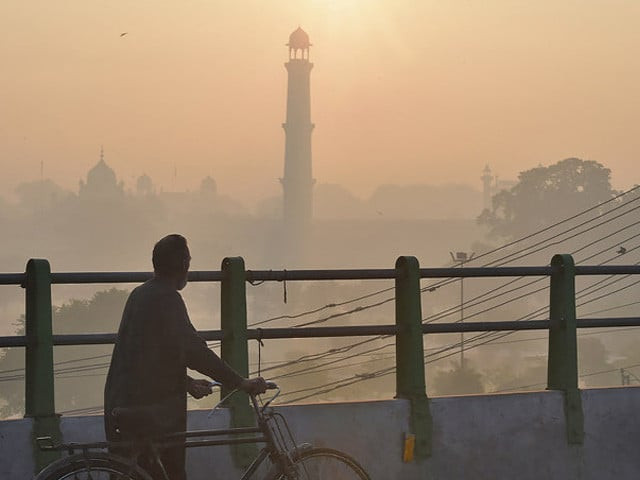COP27 is over, Lahore still heading into airpocalypse
Transport sector contributes at least twice the emissions produced by industrial or agricultural activities

The COP27 affair is over. While the breakthrough agreement on a “loss and damage” fund is hailed as the greatest diplomatic success story of the year by our government, it seems to be all “smog and mirrors” when it comes to taking concrete actions regarding the smoky skies in Punjab.
A pareto analysis of the smog problem clearly shows that the main causes of the phenomena are the vehicles and transportation sector, the construction sector, industrial sector, and the agricultural sector – with transport sector contributing at least twice the emissions produced by industrial or agricultural activities.
Our policy, however, has always targeted the lower priority sectors only – with higher priority actions items being superseded for the sake of optics. For years, we have categorically blamed the smog problem solely on the practice of burning rice residue by farmers in the rice belt of Punjab – which was uncalled for. During the covid era, we saw that the smog problem had temporarily disappeared even though the agriculture sector continued with business as usual. It was, however, the closure of schools, offices and some industrial units that led to much lesser traffic density and hence a better air quality index.
When it comes to transport, the urban upper-middle class is at the heart of the problem. As parents drop their kids to school in their private vehicles, they not only cause traffic jams in the early morning hours, they also contribute to excessive emissions. Making it compulsory for students to use public transport or school buses alone will solve a lot of problems for megacities like Lahore.
It is also very important to understand that car tyres produce way more particulate matter than their exhausts.
In winters, there is a dire need for the government to ban all private construction as well as non-essential public civil works, in and around the city, to limit the level of dust and emissions. At present, infrastructure projects, including the remodeling of Lahore’s chowks, are in full swing which is exacerbating an already terrible state of air quality.
Similarly, instead of depending on Environmental Protection Agency (EPA) staff or district administration officials to monitor industrial units, why not use Internet of Things (IoT)-based Particulate Matter 2.5 (PM2.5) sensors mounted on pole lights to monitor and evaluate the air quality index (AQI)? Not only will it eradicate corruption and promote the uptake of scrubber machines, the real-time AQI data will itself offer transparency to the citizens living in the vicinity of such industrial zones.
There is also a need to introduce a biomass policy for the briquetting of bio waste and crop residue. India has developed cheap briquetting machines for the compression of bio residue that cost as low as $2400 and are driven by livestock. A clear policy in this domain can incentivise farmers to not waste energy by burning residue – though it is important that any potential rebound effects of a new policy be well-thought of as well.
At the same time, policymakers should not be tempted to introduce policies such as barring even numbered vehicles for three days of week or imposing a blanket ban on diesel cars. Schemes like this work only in the short term and have always backfired in the long run. Instead, policy-makers should work out arrangements that promote carpooling – by reserving express lanes for these PM2.5 emitting machines when they have an above 70% occupancy ratio.
PM2.5 and PM10 values indicate the count of harmful particles that can enter our bloodstream and deep inside our lungs. Unfortunately, cities like Lahore are reporting these numbers at record levels. Unless concrete policy steps are taken at a swift pace, the next airpocalypse may be just around the corner.
The writer is a Cambridge graduate and is working as a strategy consultant
Published in The Express Tribune, December 12th, 2022.
Like Business on Facebook, follow @TribuneBiz on Twitter to stay informed and join in the conversation.


















COMMENTS
Comments are moderated and generally will be posted if they are on-topic and not abusive.
For more information, please see our Comments FAQ